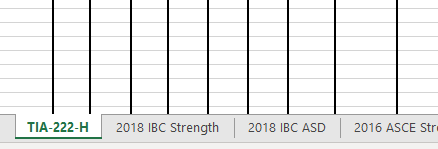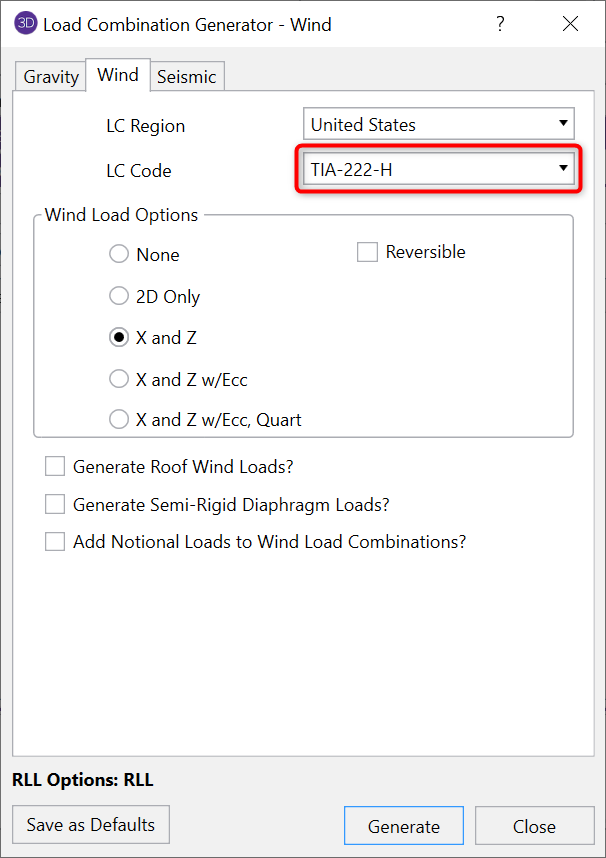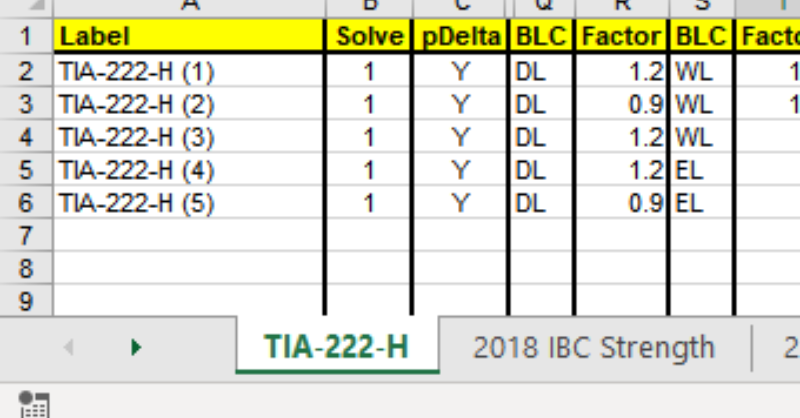Products
Learn
Support
Company
RISA-3D, RISAFloor and RISAFoundation allow users to create custom load combination sets by modifying and expanding the underlying XML file used by the Load Combination Generator. To learn more, review the video and article below:
The Load Combinations for each region are contained in an XML file which can be opened and edited using a standard spreadsheet program. An example of one of these XML files is shown below:

The name of the file itself becomes the name of the Load Combination Region that appears in the Load Combination Generator. Each XML file has a series of “worksheets” and the name of each worksheet will be the name of the Load Combination Code that appears in the Load Combination Generator.
In addition to the standard load combination codes that exist by default in RISA-3D, new codes can be manually added in order to expedite the creation of load combinations. An example of this is the use of the TIA-222-H, Standard for Antennas and the Supporting Structures for Antennas and Small Wind Turbines.
To begin, open the appropriate Load Combination Region file from the following folder:
C:\RISA User Data\YOURNAME\Load Combinations
Once the file is open, add a new tab for the load combination that you want to create by copying one of the other tabs and deleting the contents of the combinations

In the new sheet, you can create the load combinations that are required for the code. When doing this make sure to utilize the proper basic load case notation when adding text in the “BL” column. The basic load case notation can be found by clicking the link below:
Link: RISA-3D Help: Basic Load Cases

Once all the necessary load combinations have been added, save and close the file. When you open RISA-3D the next time, you should now see the new load combination code in the load combination generator.

You can then generate the load combinations for gravity, wind and seismic to create all required combinations for the analysis and design.

Notes:
When the program is updated for new versions, the existing XML files will be “backed up” and saved with a ‘.bak’ extension while the new XML files in the update will replace them. If any changes were made to the XML files, they can be retrieved from the back ups.
The first row of each sheet is reserved for the column headers. The recognized column headers are as follows: Label, Solve, pDelta, SRSS, ASIF, CD, ABIF, Service, Hot Rolled, Cold Formed, Wood, Concrete,. In addition, there will be multiple pairs of BLC & Factor headers
